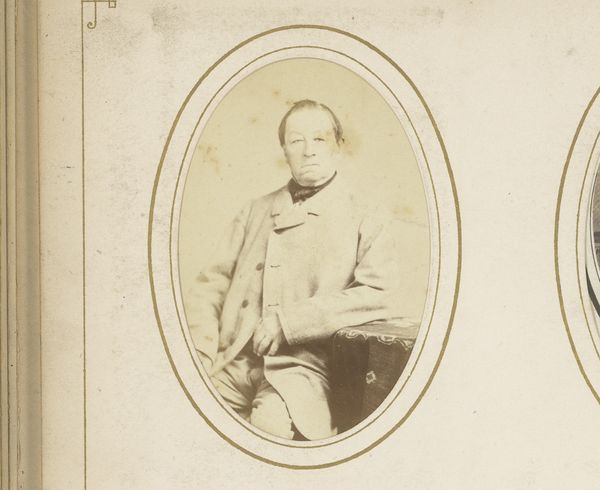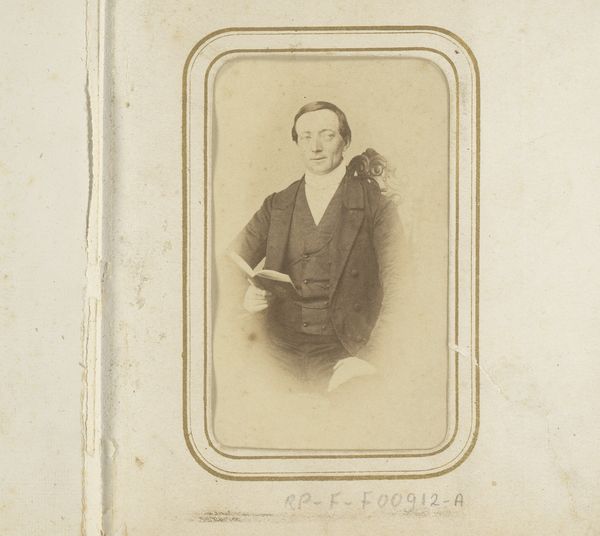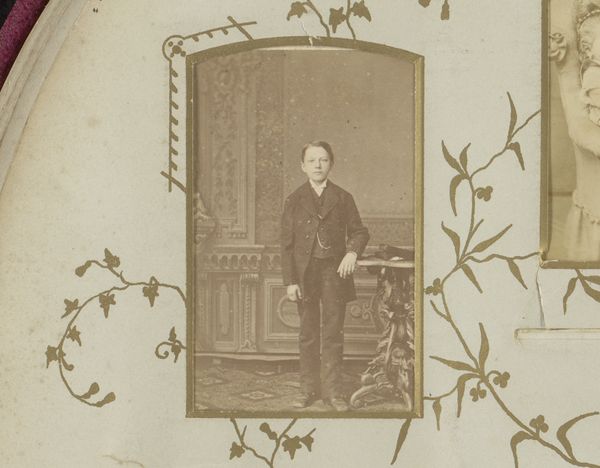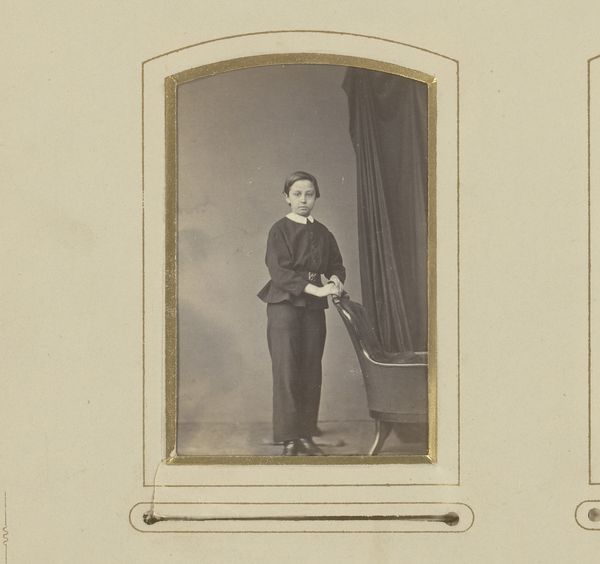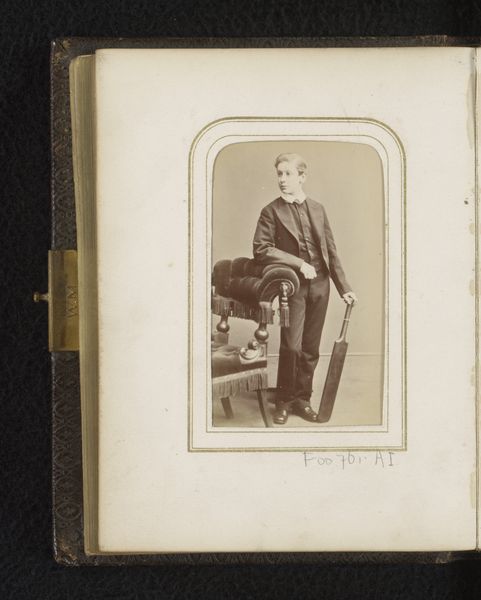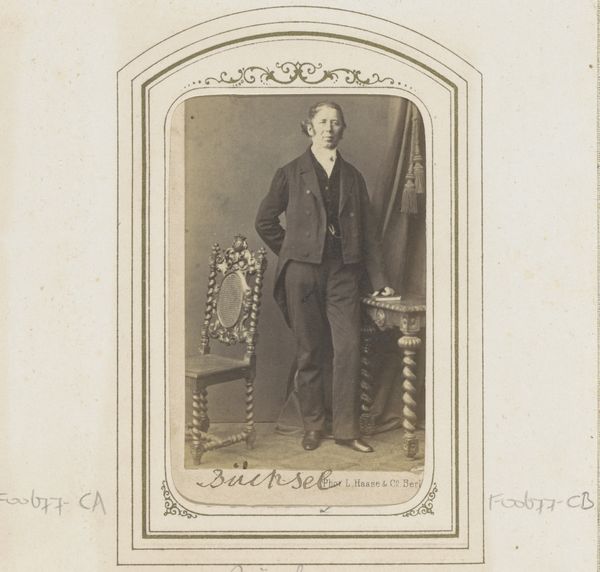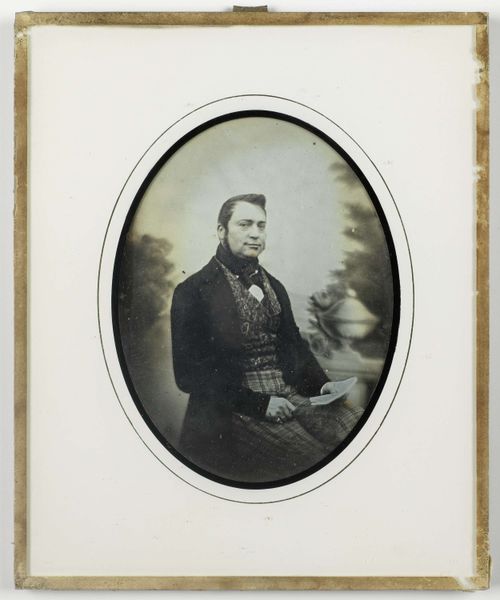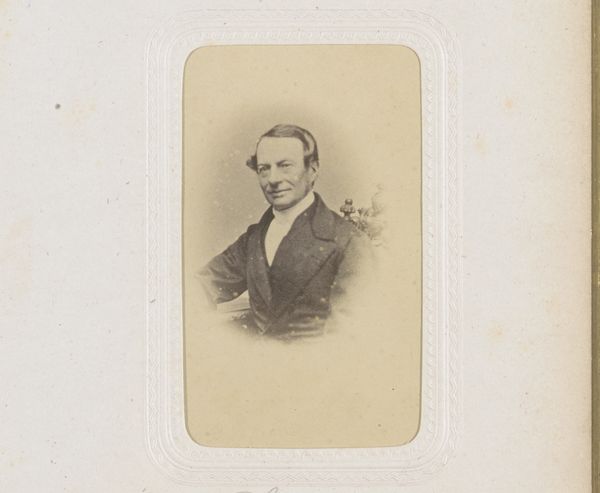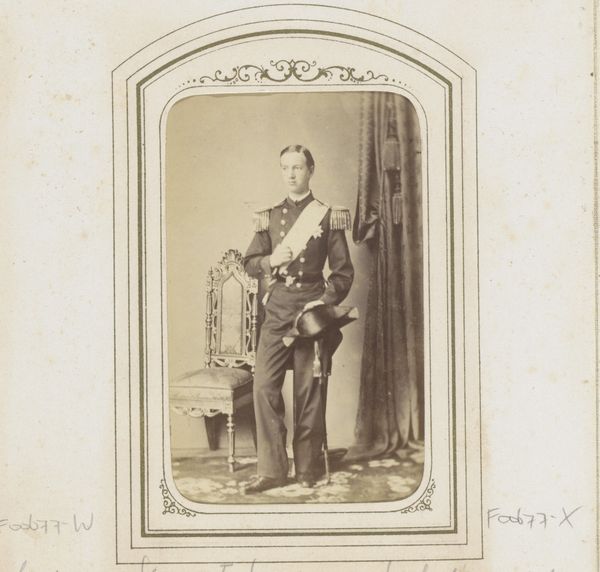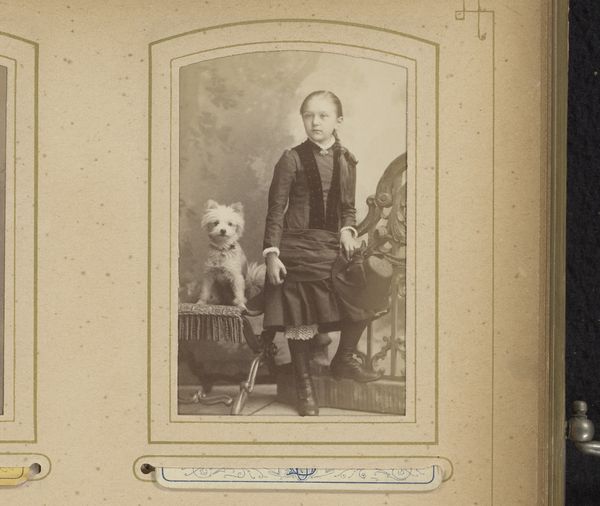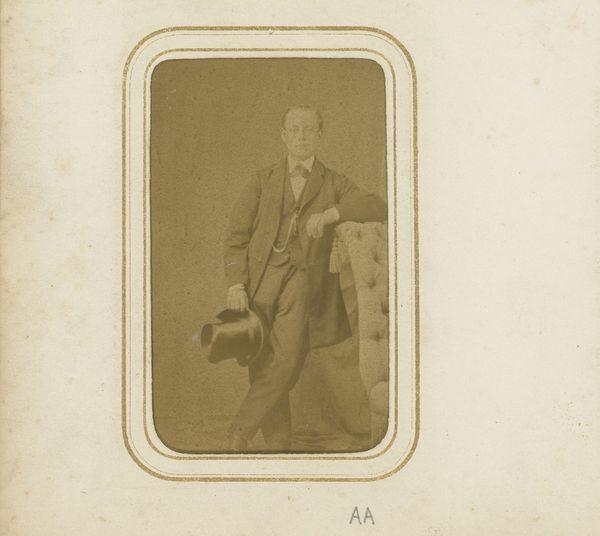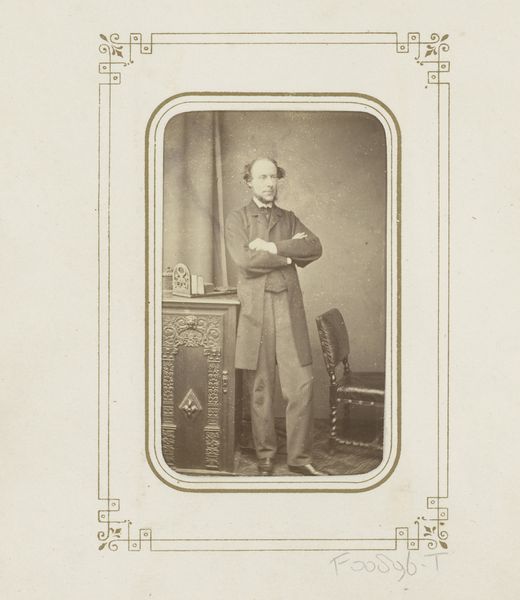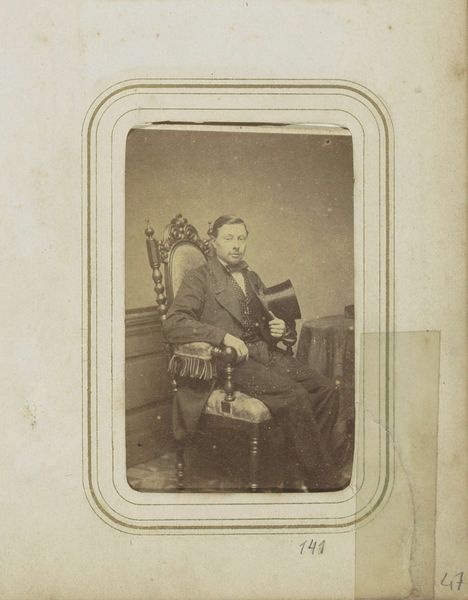
photography
#
portrait
#
photography
#
academic-art
#
realism
Dimensions: height 138 mm, width 97 mm
Copyright: Rijks Museum: Open Domain
Editor: Here we have a photographic portrait titled "Portret van een meisje, staand bij een hekwerk," or "Portrait of a Girl Standing by a Fence," made sometime between 1860 and 1900 by Ernst Schroeter. The girl’s face seems almost frozen in time, staring out… How do you read this image? Curator: This image whispers stories of societal expectation and nascent individuality, echoing across decades. The fence, though ornamental, hints at enclosure. What do you think it might represent for her? Is it a symbol of protection or limitation? Editor: I suppose both. I see how the formal pose clashes a little with her gaze—she seems like she wants to look away, somewhere beyond the studio. Curator: Indeed. The oval frame itself becomes a symbol. Consider how often we frame what we cherish or wish to remember. The act of framing—isolating a subject—becomes crucial. What kind of symbolic weight might that carry here? Editor: So the framing focuses our attention, maybe a little too much, making her almost an object to be observed rather than a person? Curator: Precisely. And look at her clothing: the layers, the details, the dark colours. They speak of modesty, certainly, but perhaps also constraint. Do those details echo any contemporary ideas about ideal girlhood or womanhood? Editor: Now that you mention it, yes. There's an almost uncomfortable tension between childhood and the expectation of adulthood. So, in that sense, even an apparently straightforward portrait opens up a dialogue with cultural history. Curator: It does, doesn't it? The past lives within the present through images such as this. We remember together.
Comments
No comments
Be the first to comment and join the conversation on the ultimate creative platform.
